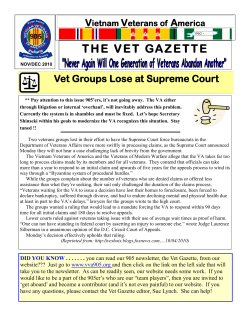
Discussion Guide
The Department of Veterans Affairs estimates that more than 1,100 World War II veterans die each day. To collect and preserve the stories of these veterans, before they are lost to history forever, the United States Congress created the Veterans History Project in 2000. The American Folklore Center of the Library of Congress collects oral history interviews, memoirs, letters, diaries, photographs and other original materials from veterans of World Wars I and II through the wars in Afghanistan and Iraq. Part character study, part oral history, Iwo Jima Diary uses the journal entries and cartoon drawings of 84-year-old former Marine, Edward “Mort” Denell to dramatically illustrate his personal combat experiences during World War II. A self-taught artist, Mort Denell has been drawing cartoons since he was nine years old. In 1943, Denell joined the Marine Corps. First trained as a paratrooper, he ultimately became a machine gunner with the 5th Marines when the paratroop unit was disbanded. After additional training in Hawaii, he found himself on a troop ship heading towards Iwo Jima. To pass the time and to help maintain his sanity, Denell began recording his combat experiences in a small journal. His story is a harrowing one, filled not only with the horrors of combat and almost unbearable hardships, but the amusing moments as well. Following the war, his journal sat in a closet and was ignored for more than fifty years. In 1995, at age 77, Denell was persuaded by his family to write down his story before it became lost forever. As he began to re-read his faded notes, the memories came flooding back, at times so vivid they caused nightmares. He began typing, eventually completing 161 single-spaced typewritten pages. More significantly, as he proceeded to put his story to paper, he began to draw, illustrating each story as he finished typing it. Seven years and more than 300 cartoon illustrations later, his story was complete. Clint Eastwood directed and released two Iwo Jima-related films in 2006. They are Flags of Our Fathers, based on the book by James Bradley and Ron Powers detailing the lives of the flag raisers, and Letters from Iwo Jima, which tells the history of Iwo Jima from the Japanese prospective. Now is a good time to take advantage of the renewed interest in the battle of Iwo Jima that was generated by these films. National Film Network 4501 Forbes Boulevard, Lanham, MD 20706 www.nationalfilmnetwork.com 1-800-431-4586 It is a selection of these stories and drawings that form the basis of Iwo Jima Diary. The story develops chronologically, told in Mort Denell’s own words, both on camera and as narrator. Starting with the bombing of Pearl Harbor, it progresses to his enlistment in the Marine Corps, to the bloody invasion of Iwo Jima. Included is the historic flag raising on Mt. Suribachi, which he witnessed from his fighting position on the ground. The story is comprehensive, covering everything from terrifying accounts of hand to hand combat with the Japanese, to characteristics about the terrain of Iwo Jima itself, to a comparison between Japanese and American battle tactics. Also included are a number of humorous anecdotes as well as several close calls. On one occasion Denell was seriously wounded following a direct mortar hit to his foxhole that killed five other Marines, cutting them all in half. The story concludes with the withdrawal of the Marines from Iwo Jima, following thirty-six days of intense fighting that claimed the lives of more than 6,000 Marines and almost 21,000 Japanese. www.nationalfilmnetwork.com www.nationalfilmnetwork.com www.nationalfilmnetwork.com www.nationalfilmnetwork.com www.nationalfilmnetwork.com www.nationalfilmnetwork.com www.nationalfilmnetwork.com Discussion Guide 1 Discussion Guide Audience As the story unfolds, extensive camera moves over the drawings bring details sharply into focus. The story is further enhanced by combat footage supplied by the Marine Corps Archives to support key segments, including newsreel footage of the invasion and the flag raising on Mt. Suribachi. Notes 12 years and above B-roll footage includes Mort Denell working in his studio in Oscoda, Michigan, details of the studio itself, his collection of war souvenirs and memorabilia, and various shots in and around his home on the shore of Lake Huron. Additionally, the film includes photographs from Denell’s collection, as well as actual pages from his journal. Instructions/Advice Teachers should be mindful of the content matter of the film, not only the graphic nature of combat but the depictions of the Japanese soldiers. It should be pointed out that this is an oral history, based on the experiences of the narrator and artist more than 60 years ago. Clint Eastwood directed and released two Iwo Jima-related films in 2006. They are Flags of Our Fathers, based on the book by James Bradley and Ron Powers detailing the lives of the flag raisers, and Letters from Iwo Jima, which tells the history of Iwo Jima from the Japanese prospective. Now is a good time to take advantage of the renewed interest in the battle of Iwo Jima that was generated by these films. Notes IMPORTANT FEATURES Cautionary Remarks Iwo Jima Diary deals with the brutality and harsh realities of combat. While there are several scenes of dead and wounded soldiers, the majority of the graphic content in the film is shown in the form of cartoon drawings. Understanding The battle of Iwo Jima was one of the most ferocious in the history of World War II. Beginning with the invasion on February 19, 1945, the battle raged for thirty-six days and claimed the lives of more than 6,000 Americans and almost 21,000 Japanese. This fierce battle took place on a small volcanic island, just eight square miles, in the Pacific Ocean. Iwo Jima was of strategic importance for a number of reasons. Located 650 miles from Tokyo, the island served as an early warning station for the Japanese when American B-29 bombers flew missions to Japan. Once secured by the Americans, its three airstrips would provide a base for escort planes for these B-29s. Iwo Jima also would provide an emergency landing strip for damaged planes returning from bombing raids on Japan. Because of this, countless lives were saved. On February 23, 1945, only four days after the invasion, the American flag was raised on top of Mt. Suribachi. The photograph of the flag raising, taken by photographer Joe Rosenthal, has become an icon. After the flag raising, the fighting lasted another 32 days. Of the 20,700 Japanese troops commanded by General Tadamichi Kuribayashi, only 200 survived. The 100,000 Americans commanded by General Holland Smith suffered 6,821 mortalities and 20,000 wounded. www.nationalfilmnetwork.com • 1-800-431-4586 Iwo Jima Diary www.nationalfilmnetwork.com www.nationalfilmnetwork.com www.nationalfilmnetwork.com www.nationalfilmnetwork.com www.nationalfilmnetwork.com www.nationalfilmnetwork.com www.nationalfilmnetwork.com The general public, history students, military students, soldiers, veterans and anyone interested in WWII. The film also serves as an example for those considering collecting oral histories from veterans. Age/Grade Iwo Jima Diary 2 Discussion Guide Activities Iwo Jima Diary Notes www.nationalfilmnetwork.com www.nationalfilmnetwork.com www.nationalfilmnetwork.com www.nationalfilmnetwork.com www.nationalfilmnetwork.com www.nationalfilmnetwork.com www.nationalfilmnetwork.com • Students could visit the web site of the Veterans History Project and explore the collections available online. • They could download the forms and guidelines available and conduct their own oral history interviews. • The students could also contact any veteran’s groups in their area and arrange for a World War II veteran to come to their classroom and share his experiences. THINGS TO THINK ABOUT / THOUGHT-PROVOKING QUESTIONS 1. Why was Iwo Jima important? 2. When is war justified? 3. What are your feelings about the military? 4. Should people with moral issues about killing be forced to fight in a war? 5. How do you think you would react to being in a combat situation? 6. Discuss the importance of service to country and patriotism. 7. Do you think Americans were more patriotic during World War II than they are today? 8. Do you know anyone who has fought in a war? www.nationalfilmnetwork.com • 1-800-431-4586 Iwo Jima Diary 3 Discussion Guide OTHER RESOURCES Iwo Jima Diary Notes www.nationalfilmnetwork.com www.nationalfilmnetwork.com www.nationalfilmnetwork.com www.nationalfilmnetwork.com www.nationalfilmnetwork.com www.nationalfilmnetwork.com www.nationalfilmnetwork.com Books • Flags of Our Fathers by James Bradley and Ron Powers (Bantam, 2000) • Into the Rising Sun: In Their Own Words, World War II’s Pacific Veterans Reveal the Heart of Combat by Patrick O’Donnell (Free Press, 2002) • Iwo Jima by Richard Newcomb and Harry Schmidt (Henry Holt, 1965) • The Ghosts of Iwo Jima by Robert S. Burrell (Texas A&M University Press, 2006) • Iwo Jima: Legacy of Valor by Bill D. Ross (Vintage, 1986) • Never in Doubt: Remembering Iwo Jima by Lynn Kessler (Naval Institute Press, 1999) • Uncommon Valor, Common Virtue by Hal Buell (Berkley, 2006) • The Last Lieutenant: A Foxhole View of the Epic Battle for Iwo Jima by John C. Shively (Indiana University Press, 2006) • God Isn’t Here: A Young American’s Entry into World War II and His Participation in the Battle for Iwo Jima by Richard Overton and Gary Toyn (American Legacy Media, 2006) Films • • • • • • • To the Shores of Iwo Jima (1945) Iwo Jima: Memories in Sand (2001) Sands of Iwo Jima (1949) Heroes of Iwo Jima (2001) Iwo Jima: 36 days of Hell (2006) Flags of Our Fathers (2006) Letters from Iwo Jima (2006) Internet • Veterans History Project (Library of Congress) <http://www.loc.gov/vets> • Closing In: Marines in the Seizure of Iwo Jima by Colonel Joseph H. Alexander <http://www.nps.gov/wapa/indepth/extContent/usmc/pcn-190-003131-00/index.htm> • The Battle of Iwo Jima <http://www.angelfire.com/wa/redwoodsigns/iwojima.html> <http://edtech.suhsd.k12.ca.us/inprogress/suh/GForand/IwoJimaQuest.htm> <http://www.military.com/NewContent/0,13190,NI_Iwo_Jima2,00.html> • Iwo Jima: Amphibious Epic by Lt. Col. Whitman S. Bartley, USMC <http://www.ibiblio.org/hyperwar/USMC/USMC-M-IwoJima/index.html> • History of U.S. Marine Corps in World War II Volume IV: Western Pacific Operations <http://www.ibiblio.org/hyperwar/USMC/IV/USMC-IV-VI-1.html> • Iwo Jima <http://www.iwojima.com> <http://www.geocities.com/rbackstr2000> • The Pacific War Memorial <http://www.pacificwarmemorial.org> www.nationalfilmnetwork.com • 1-800-431-4586 Iwo Jima Diary 4
© Copyright 2025









